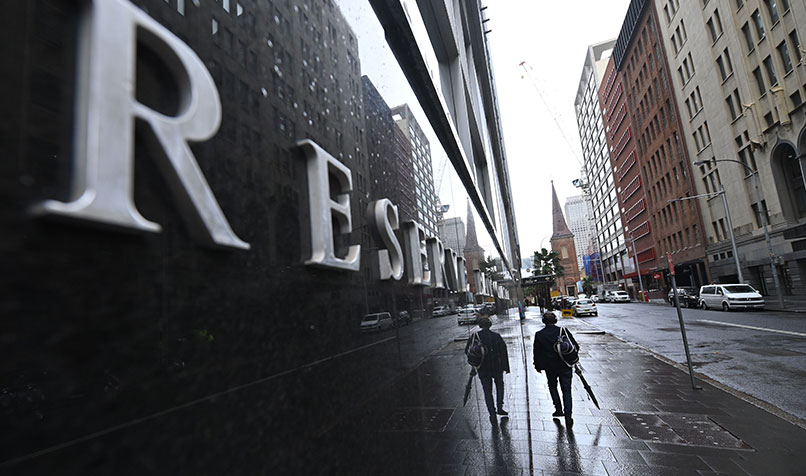Loading component...
At a glance
- Negative interest rates were initially adopted in the aftermath of the global financial crisis, and are considered to be one of the boldest monetary experiments of the 21st century.
- The use of negative interest rates requires a balancing act. Negative rates lower mortgage rates and the cost of business overdrafts and borrowings, but can lead to significant debt problems in the long term.
By Zilla Effrat
Early this year, the Bank of England (BoE) gave the UK banking system six months to prepare for negative interest rates. This was not because negative interest rates were definitely on the cards. Rather, the BoE wanted to have the option to use them should the emergence of vaccine-resistant variants of COVID-19 lead to more lockdowns and further damage to economic activity.
Azad Zangana, senior European economist and strategist with investment management firm Schroders, says the BoE believes negative interest rates, if needed, could help it kick-start spending by getting money flowing out of banks and into the economy in the form of loans and mortgages.
“Quantitative easing – the BoE buying government bonds and corporate bonds – is one way to do this. And cutting interest rates is another. As interest rates are now only 0.10 per cent, cutting much further would lead to negative interest rates,” Zangana says.
A big experiment
Considered one of the boldest monetary experiments of the 21st century, negative interest rates were first adopted by several countries in the aftermath of the global financial crisis (GFC) to get developed economies up and running again, and to counter unemployment and below-target inflation rates.
“Since the 2008 GFC, central banks around the world have been wrestling with the reality that their influence over economic conditions via traditional policy levers has waned,” explains Stephen Smith, partner at Deloitte Access Economics.
“In years gone by, central banks have adjusted their policy rates in order to encourage or discourage borrowing and spending in the economy, and therefore influence the pace of economic growth. But in an environment where there is less willingness to borrow in general, changes to policy rates have less impact.”
That, Smith says, has encouraged some central banks to resort to unconventional levers, including negative interest rates.
Positives and negatives
Normally, interest rates are positive. People earn interest on their savings and pay interest when they borrow. Negative interest rates turn this well-worn process on its head, penalising consumers and businesses for keeping savings in the bank. Theoretically, the value of savings either decreases over time, or depositors are subject to bank holding fees.
“Thus, depositors would have less incentive to keep their money in the bank compared to, say, under the mattress,” says Smith.
“In countries with negative policy rates, banks have typically maintained a zero interest rate on retail deposits. They could, however, go negative,” he says.
"People don't understand how they work. They see them as extreme. That could affect confidence, because it signals a degree of hopelessness... it creates a distortion in the financial system."
Why would anyone pay to keep their money in the bank? “Convenience is one reason, but also if depositors were concerned that they couldn’t get a better return elsewhere and they wanted to preserve as much of their cash as possible. That is, they are more concerned with the return of capital rather than the return on capital,” says Smith.
Smith says the use of negative interest rates requires “a fine balance”. “Central banks are treading very carefully as a result. If the economy is sick and the treatment is experimental, we should expect some adverse side-effects,” he adds.
The negatives of negative rates

Dr Shane Oliver, head of investment strategy and chief economist at AMP Capital, says negative interest rates can reduce mortgage rates and the cost of business overdrafts and borrowings.
“We’ve seen some countries in Europe offer negative mortgage rates, but they seem to be the exception rather than the rule,” he says.
“Negative interest rates might also keep the Australian dollar lower than what otherwise might be the case, and that would make it easier for businesses to compete internationally.”
On the flipside, Oliver says you can also find yourself becoming too relaxed with very low interest rates and borrowing too much because your debt servicing bill collapses. This could lead to excessive levels of debt down the track.
According to Professor John Freebairn AO, Ritchie chair of economics at the University of Melbourne, the move out of bank savings into other assets could also cause problems with asset valuations.
“In the process of reallocating funds to own homes, other property, company shares – the prices of these assets are driven upwards,” he says. “These effects have increased the inequity of wealth and also favoured older generations relative to younger generations.”
For potential property buyers, this means higher property prices and larger required deposits, which, according to Oliver, dent housing affordability.
“The value of an asset is the present discounted value of its expected earnings,” explains Oliver.
“You can apply that to property, shares or any asset. But if the rate of interest you use to discount those earnings goes negative, then the price of the asset can, in theory, go to infinity. So negative interest rates can generate severe asset price inflation, which could cause problems later, when interest rates return to positive. You can also end up with extremely volatile markets. Negative rates do turn finance on its head.”
Oliver adds that negative interest rates tend to create confusion. “People don’t understand how they work. They see them as extreme. That could affect confidence, because it signals a degree of hopelessness. It’s like nothing is working. It creates a distortion in the financial system.”
Oliver says negative interest rates can also make existing problems even tougher for financial advisers.
“For example, you may have some clients with low-risk tolerances who don’t want a lot of money in share markets or growth assets, and prefer money in bank deposits or government bonds. Negative interest rates are not good for those types of investments. How do you advise 75-year-old retirees to put their money in the bank and get -1 per cent return?
There are few options available. “You can advise them to put their money in shares, but negative interest rates can also create more volatility in financial markets or potential collapses in value down the track, when interest rates return to normal,” says Oliver.
“It basically makes the asset allocation problem a bit more difficult for financial planners.”
Change in favour?
At is first policy meeting of 2021, the Reserve Bank of Australia (RBA) held its cash rate at a record low 0.1 per cent. In his speech the following day, Philip Lowe, governor of the RBA, said interest rates would stay low for quite a while yet, even though the Australian economy had performed far better than expected during the COVID-19 outbreak.
Could Australia change in favour of negative interest rates? Both Oliver and Smith believe this is extremely unlikely.
“First, the RBA has signalled it has no intention to explore a negative policy rate despite pursuing other experimental policies such as quantitative easing and the Term Funding Facility,” says Smith.
“Second, the economic recovery in Australia is under way. It isn’t smooth sailing from here, but nor will it be dire enough to resort to negative policy rates.”
Oliver adds that if the RBA wants to stop the Australian dollar rising further, its preference will be to buy more government bonds and push bond yields down, rather than to take official interest rates negative.
Smith notes that, because Australian banks receive funds from a range of sources, the policy rate is not a great indicator of the cost of funds.
“It’s extremely unlikely that we would see negative interest rates on a home loan, even if the policy rate was below zero,” he says.
“This highlights one of the challenges with negative rates – are they actually effective in boosting borrowing and stimulating the economy? So far, the evidence from places like Europe and Japan would suggest not.”
Oliver agrees. “There’s not a lot of evidence that negative interest rates have worked. It confused people in Europe and Japan. But maybe that will change, because these countries are also now running massive government spending programs that may ultimately get inflation to rise.”
Case study: emerging economy

The negative interest rate approach is unlikely to be considered in emerging economies, where interest rates are traditionally high, such as Indonesia.
“For many years, Indonesia’s interest rates have been the highest among ASEAN-5,” explains Iwan Jaya Azis, adjunct professor of applied economics and policy at Cornell University in the US.
“What matters most is the rigidity of a bank’s rate, not the policy rate of the central bank, Bank Indonesia. Although Bank Indonesia has been reducing the rates during the pandemic [like all other central banks], the bank’s lending rate continues to be high.”

